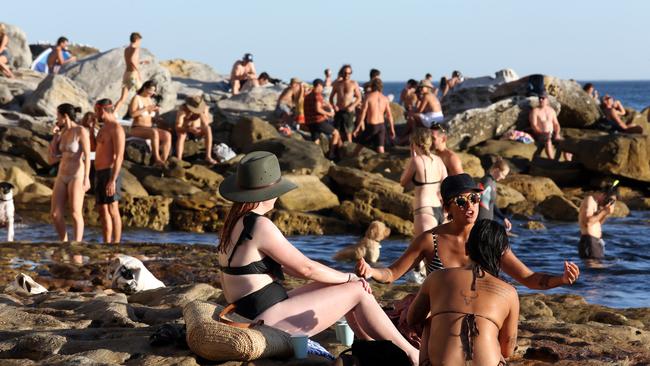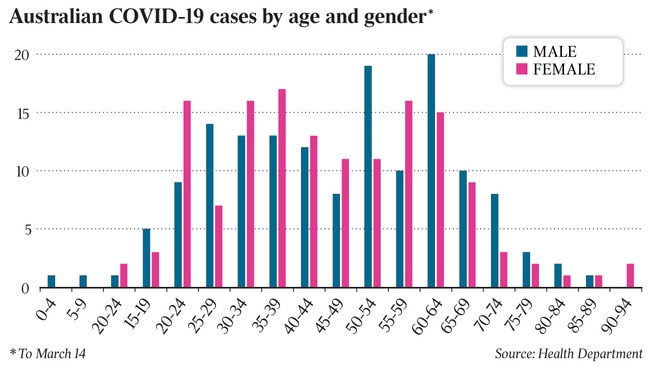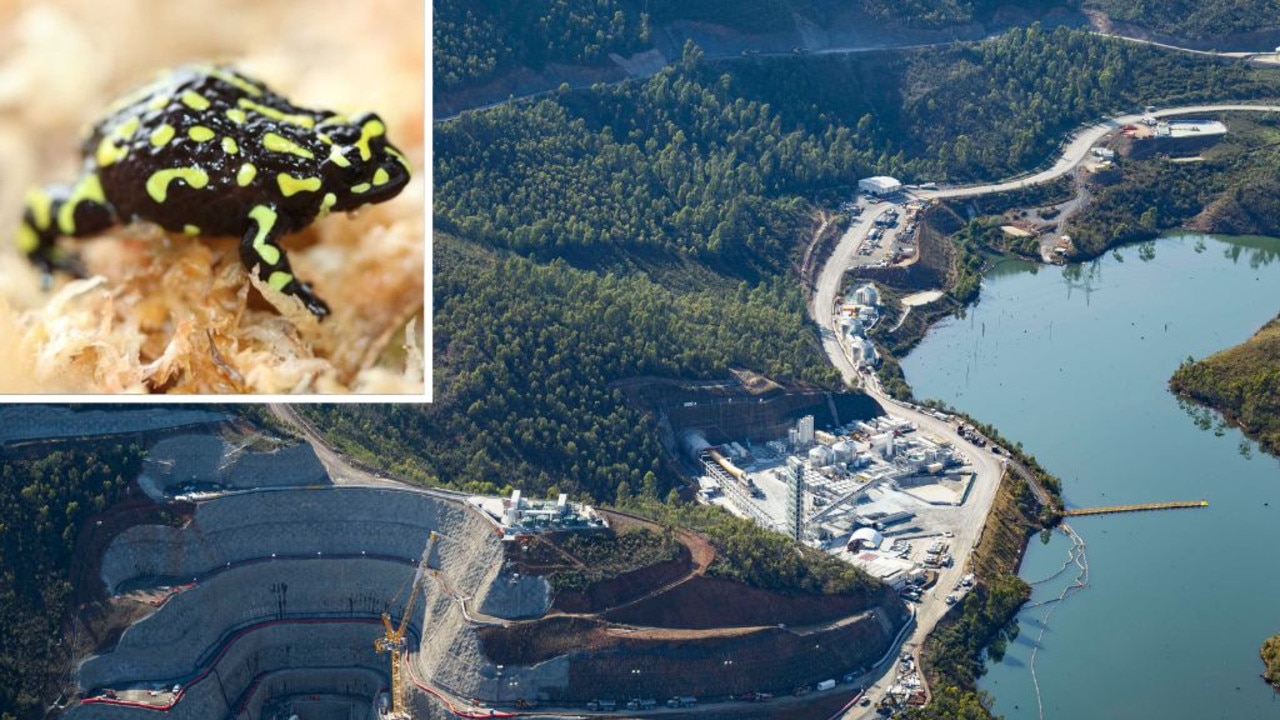Young not immune to severe cases of coronavirus
Young people are not spared the worst effects of coronavirus, with figures showing those aged 30 to 39 are hospitalised in the greatest numbers to treat the disease.

Young people are not spared the worst effects of coronavirus, with figures showing those aged 30 to 39 are hospitalised in the greatest numbers to treat the disease.
While the virus is most serious if it is contracted by people aged over 70, experts have cautioned young people that they should not be complacent about the infection and have raised concern that young people were failing to heed social distancing measures.
A total of 164 new cases of COVID-19 were diagnosed on Friday, a steep jump of almost a quarter, bringing the national case tally to 875. Six people are in intensive care in NSW hospitals.
Federal Health Department figures show people aged between 30 and 39 were hospitalised for COVID-19 in greater numbers than any other age group. Those aged 35 to 39 were the second-most likely age group to be diagnosed with the disease.
Robert Booy, an infectious disease professor from the University of Sydney, has noticed in busy Sydney suburbs that many young people are continuing to socialise and mingle in close groups despite the spread of coronavirus.
“It’s as if we’re living in the times of Noah just prior to the flood,” Professor Booy said.
“So when I see large crowds on beaches or having cappuccinos together with half a metre between each other, I ask myself, ‘Do they realise this is the real world?’
“I think we need to be like the Germans and be willing to put more discipline into our lives.”
University of Melbourne epidemiologist Tony Blakely modelled the expected number of deaths in Australia from COVID-19 using recent UK estimates from Imperial College London on death rates, and applied these to Australia.
Based on an assumption that 60 per cent of the population would need to be infected for herd immunity to be achieved, triggering the epidemic fading away, Professor Blakely’s modelling estimates there would be a total of nearly 60,000 deaths in Australia – including 3070 people under 40. That prediction assumes Australia can keep the infection of those aged over 60 to 20 per cent, meaning infection rates are 70 per cent for younger people.
However, if Australia can deliver care of the sick better than the Imperial College estimates, Professor Blakely believes deaths could be slashed to 30,000 — with 1480 of those deaths among people aged under 40. Based on the estimates of state health authorities that 20 per cent of the population would be infected in the first wave, 430 people aged under 40 would die in the initial sweep of the disease.

“Young people are not immortal, they do have a chance of dying from this disease,” Professor Blakely said. “And those numbers will add up.”
The modelling assumes a death rate of 0.01 per cent in 10 to 19-year-olds, 0.03 per cent in those aged 20-29, and 0.08 per cent in those aged 30-39.
Under the modelling, the case fatality rate climbs to 9.3 per cent in those aged over 80.
Peter Collignon, an infectious diseases physician at the Australian National University Medical School, said although young people were at low risk of dying from COVID-19, they should not ignore the risk.
“I worry that young people may have the attitude that they’re bulletproof. I think that’s a concern,” Professor Collignon said. “In France, people in their 30s are in intensive care with this disease. Even at a very low rate of death, it does not mean young people are bulletproof.”
COVID-19 infections rose by 164 on Friday, their biggest one-day jump. NSW made up the largest of the leaps in new diagnoses with 75 cases, bringing the state total to 382. One of the NSW cases was a resident of Dorothy Henderson Lodge aged-care facility, which now accounts for 11 infections.
Globally, there are now almost 250,000 cases of COVID-19 and more than 10,000 deaths.
Additional reporting: David Ross



To join the conversation, please log in. Don't have an account? Register
Join the conversation, you are commenting as Logout